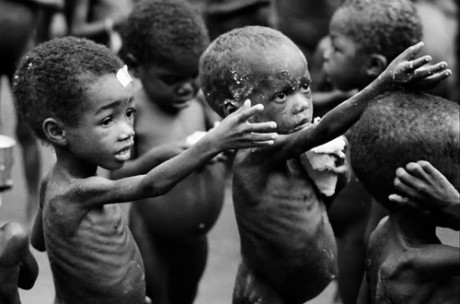What is Flexible Leadership Being flexible is the capability of readily changing (Merriam-Webster, n.d.)1. In…
Challenges and Uncertainties in Ending Hunger
*Image Source: Wikimedia
Two of the goals in the 2030 Agenda for Sustainable Development is to end poverty and hunger. The first SDG goal calls for the elimination of poverty and the second SDG goal is the elimination of hunger by 2030. It is significant to note that agricultural growth in low-income economies will be one of the major contributors in achieving the SDGs.
Global ecosystems are under pressure. There must be a sustainable and environmental way in increasing food production. There is an exponential growth in the global population. With this status, producers need to produce more food in a sustainable manner. Negative environmental impacts must be reduced such as water and nutrient loss, degradation of ecosystems, and greenhouse gas emissions. Food systems must be transformed by promoting a sustainable lifestyle. Governance must be improved and the political will must be secured.
There are three specific challenges. First, the problem on how to increase food production while using less water. Water withdrawals are mostly used by crops and livestock. It is predicted that by 2025, 1.8 billion people are residing in locations with no water. Second, one-third of the food produced is lost or is wasted. Consumers must be offered with incentives to transition to nutritious and safe diets with a lower carbon footprint. Third, the reality of climate change as a threat to the worldwide production of food is there. All agricultural investments can support adaptation and mitigation to climate change while improving the livelihood of rural people.
Population
A growing population needs more food even if other factors are all equal. It is a reality that there is inequality in everything else. When there is an increase in household income, people’s preferences move towards fruits and vegetables, livestock products, oils and fats, and others. China is already experiencing this trend and this will magnify in other regions in Asia, as well.
Food Demand
When households increase their income and increase their household expenses, the first thing that families spend on is food. This spending pattern on food is inclined towards grains and livestock products. However, animals also require grains in order to produce livestock products. It can be seen that animals and people compete with respect to grains as they are either consumed by people directly or are used to feed animals.
Climate Change
Climate change severely affects millions of rural poor people as the Asia-Pacific region has a high vulnerability to it. Scientists project that there will be a 0.5-2.0 degree Celsius increase by 2030. This will produce greater rainfall concentrating during the summer monsoon and decrease in winter rainfall. An estimated 500 million rural poor depends on its agricultural yield on rainfall. Thus, if there will be failed monsoons, farmers will be devastated.
Few countries have strengthened their ability in climate change adaptation. However, majority of the countries have few measures in building resilience to climate change. Thus, agricultural lands that are of high value will face serious losses. The temperature increase will result to crop stress that will lead to yield reductions. Low-lying coastal areas will also be put in danger as there is an increase in sea level.
Conclusion
There are truly dangers in ending hunger and poverty. These dangers are realities that Asian nations have to face. It is up for governments, public and private sectors, to face these challenges.




